Set phrases in the Russian language that have an allegorical meaning are usually called phraseological units. With their help, you can not only decorate a person's speech, making it more emotional, but also develop creative potential, for example, by asking the child to draw a picture on the topic of a sentence with a figurative meaning.
Basic information about phraseological units
Most phraseological units have a rich history and over time have become archaic.
According to the generally accepted classification of Vinogradov (a Soviet scientist and linguist), the Russian language has 3 main groups of phraseological units:
- Speech "fusions" (or idioms). They are used exclusively in the original phrase, losing their meaning when words are rearranged or one of them is replaced with synonyms.
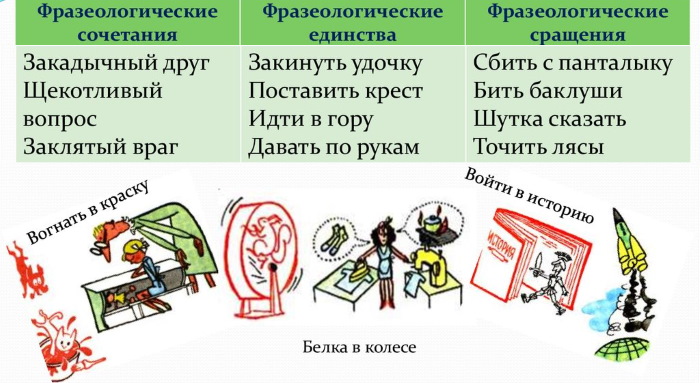
- Speech unities. These are phraseological units that acquire meaning from the meaning of individual words and retain it even when figuratively translated into a foreign language.
- Speech combinations. These are phraseological units that are most often used in the same context, but do not change their meaning even when one of the constituent parts of the phrase is replaced by a synonym. Their meaning is perceived from the meaning of a separate word.
Phraseologisms in pictures
A drawing on the theme (phraseologisms are selected by the teacher taking into account the age of a specific group of schoolchildren) of the meaning of well-known set phrases helps develop the visual perception of children aged 8–12.
It also clearly illustrates how they understand the expression being discussed (if the picture is drawn by the students themselves) or how they should understand it (if the teacher, in the course of explaining the meaning of the phraseological unit, facilitates understanding by showing a ready-made corresponding image).
2-3-4 grades
A drawing on the topic of phraseological units - for students in grades 2-4 they should be superficial, consisting of a minimum number of components.
Drawings on the topic of the meaning of a set phrase should be shown to students with a parallel story from the teacher about the meaning of the phraseological unit, as well as the history of its origin in a condensed form.
| Drawing of a phraseological unit | Description |
 | Phraseologism "A cat cried" means "a minimal amount of something". Currently, there are two most popular versions of the origin of this set phrase. According to the first, cats, despite the fact that they have developed tear ducts from birth, use them extremely rarely. This means that they cry very few tears during their lives. According to the second story, the phrase in question comes from an Arabic phrase that sounds similar to Russian in pronunciation. Translated, it means "to start receiving little money." This meaning was transformed by linguists into the speech pattern “a cat cried”, which later received a generalized meaning. |
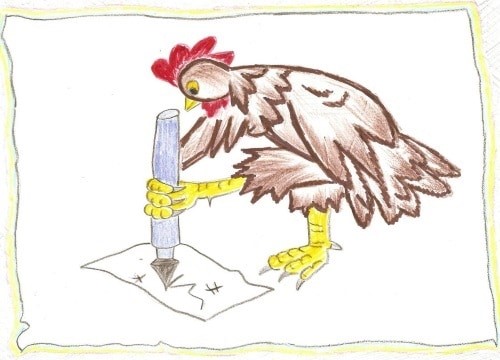 | Phraseologism "To write like a chicken with its paw" means to write carelessly, illegibly. Linguists and philologists consider two official versions of the origin of this set phrase.
According to one of them, the meaning of the phrase is related to the fact that since ancient times the chicken has been considered one of the most stupid and spineless birds. People who do not care about making their notes neat and legible are associated with dim-witted birds with limited intelligence. Another version is that chickens in their natural environment begin to run around the yard, moving their legs chaotically. As a result of such movements, the birds leave scribbles on the ground that look like text written in illegible handwriting. |
 | Phraseologism "To prick up one's ears" means to listen carefully to a sound, conversation, noise, etc.
Despite its unusualness, the history of the origin of the phrase in question is extremely superficial and relates to the instincts of all living beings. When in the wild, animals, succumbing to their innate habits, turn, and in some cases, literally hang, their ears in the direction from which extraneous rustling was heard. This behavior allows the inhabitants of the wild to detect approaching danger in time, thus saving their lives. A person who has pricked up his ears also turns toward the source of the sound that interests him. |
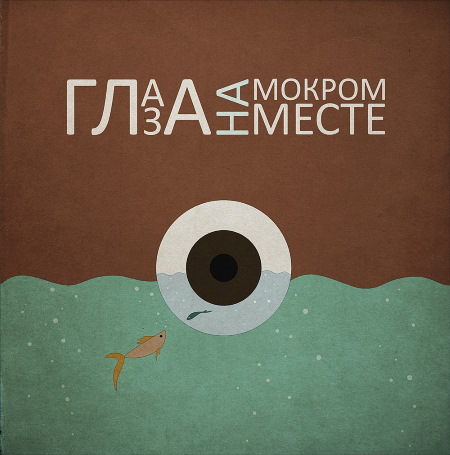 | Set phrase "Eyes on a wet spot" usually applied to a tearful person who often has tears in his eyes.
This phrase comes from comparing the eyes of a sensitive person to a piece of land that is in a wet place. In such an area, condensation often forms, which can be visually detected by paying attention to the presence of water droplets on the surface of the ground or plants grown there. |
 | Phraseologism "Keep yourself in hand" means a person’s ability to restrain their emotions, control words and actions.
The use of the word “hand” in the set phrase under consideration is explained by the fact that in the 19th century it was used in speech as a synonym for the word “power” (for example, the sentence “He has a big hand” meant that the person in question had great power). The ability to cope with one's emotions requires a person to have the ability to subordinate and control them. |
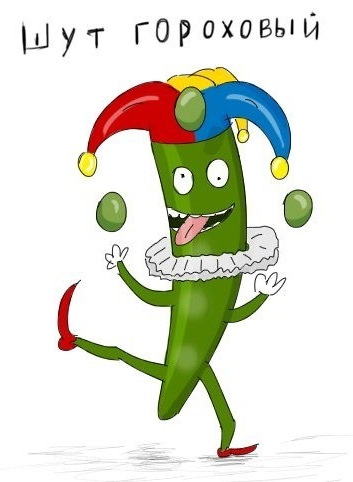 | Definition of "Jester" usually applied to a person who often makes fun of himself. The history of this phraseological unit dates back to Ancient Rome.
There, people entertaining the rulers used rattles in their performances, the inside of which was filled with peas. When the fashion for pea attributes reached Rus', buffoons, to create a greater effect, began to complement their costumes with pea straw, for which they received the nickname "pea jester". |
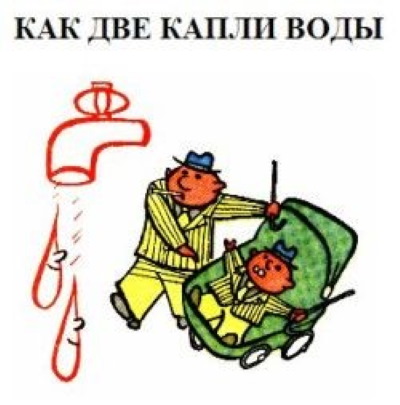 | The expression "Like two drops of water" usually used when talking about something that has a huge resemblance.
This set phrase arose from a visual comparison of the appearance of drops of water flowing from the same tap or natural source. Such drops are not only identical in shape, but also have the same color, smell, density and even chemical composition. |
5-6 grades
A drawing on the topic of phraseological units - for middle school students it is necessary to select one whose illustration or superficial meaning will be funny for the younger generation.
Children in grades 5-6 can create such a drawing on the topic of the meaning of set phrases independently, based on the description of the meaning voiced by the teacher.
| Drawing of a phraseological unit | Description |
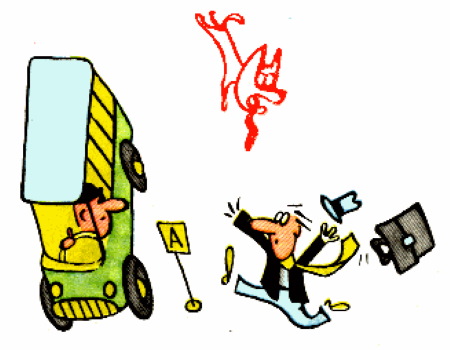 | Set phrase "Run with your tongue hanging out" is used in the context of a person's extreme fatigue. The history of this phraseological unit is associated with associations with the behavior of a dog. When an animal runs quickly somewhere, due to a sharp increase in body temperature, it sticks out its tongue to cool down and thus normalize its condition. |
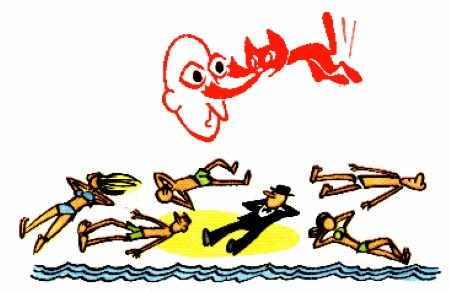 | Phraseologism "To catch the eye" used to mean "to attract the attention of others with one's unusual appearance."
This phrase acquired a descriptive meaning from its literal meaning, where “eyes” were considered not as a separate organ, but vision as a whole. |
 | The phrase "Get up on the wrong foot" used in conversation when talking about an angry, aggressive person who is in a bad mood.
The history of the emergence of the stable phrase is connected with the concept of people in the old days that “right” is pleasant, correct, good, and “left” is bad, evil, illegal. If a person gets out of bed on the wrong side of the bed in the morning, then his day will not go well – he will offend those around him and will be overly sensitive to words addressed to him. |
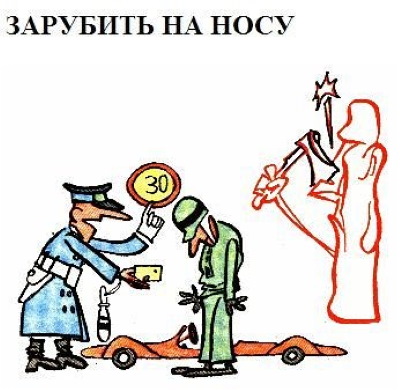 | Phraseologism "To remember" means "to remember for a lifetime."
It began to be used in speech in ancient times, when a compact wooden board that served as a notebook for its owner was called a nose. They always carried it with them so that, if necessary, they could write down important information on it. |
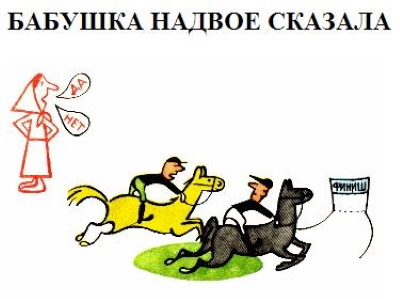 | The phrase "Grandma said it in two" used by a person when he talks about something he himself is not entirely sure about.
The history of the origin of the phraseological unit is connected with the fact that previously grandmothers were women who, according to them, were able to predict the future. Most of them did not actually possess such a gift, therefore, in order not to spoil their reputation, they gave ambiguous predictions, without providing specifics in response to the question asked by the person. |
 | Phraseologism "No trace left" used in speech when talking about a person who has quietly escaped, hidden from the eyes of others.
This phrase comes from a phrase that is a kind of professional vocabulary of hunters. Hunters call a trail "hot" if it was left recently and still contains the scent of the animal, which can be used by hounds to locate prey. If the trail has already gone cold, it will be uninformative for the bloodhounds, which means it is impossible to find the escaped creature. |
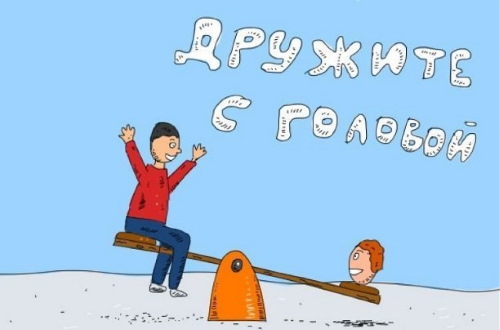 | Phraseologism "Be friends with your head" used in conversation when talking about a smart, adequate person who is guided by common sense rather than emotions when making decisions.
The emergence of this set phrase is connected with its direct meaning. Friendship implies an attentive attitude towards your loved one, listening to his opinion, as well as coordinated work in overcoming the difficulties that arise along the path of life. |
 | Set phrase "to lead by the nose" means "to deceive, to deliberately mislead the interlocutor." There are 2 versions of the history of its origin.
According to one version, this phrase is associated with a method of animal control in Ancient Greece, when a special ring was inserted into the animal’s nose, to which a rope was tied. By tightening or loosening the rope, the person indicated to the animal how it should behave at the current moment. According to the second version, a person who leads another by the nose is compared to the gypsies who, in order to organize their show with bears, inserted a ring into his nose and led him around on a leash, entertaining those around him. |
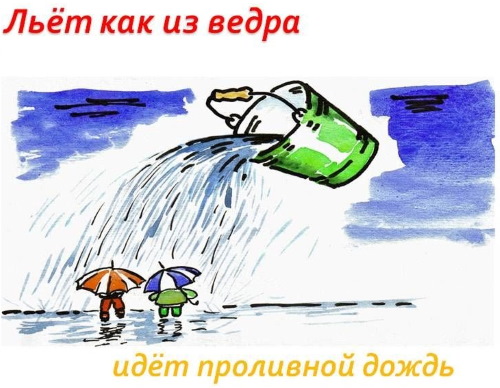 | Set phrase "It's pouring" used when talking about a heavy rain during which the drops merge into a single stream, forming a stream similar to that formed when pouring the contents of a bucket.
According to legend, one day a famous sage of Ancient Rus' was doused with water from a bucket, after which, several hours later, heavy rain began to fall. The philosopher, later telling about what happened, said that, having been caught in the rain, he experienced the same sensations as when he was doused with water from a bucket. |
 | Phraseologism "Pull the cat by the tail" originally meant lightning-fast decision-making.
Later, in 1924, it began to be used with the opposite meaning – “to delay making a decision or taking an action, accompanied by irritation, wasted nerves and unpleasant experiences.” The explanation for such a transformation of meaning is related to the fact that if a person wants to pull a cat by the tail in the literal sense, then he should act slowly, trying to distract the animal's attention, thereby smoothing out the expression of its discontent. |
Children's drawings about feelings and emotions
Phraseologisms help adults to express their emotions in a cultural manner, which often have a negative connotation.
In order to give children the opportunity to reflect on the topic of their internal state, it is recommended to invite them to create drawings without involving outsiders in the process.
The work should be organized as follows:
- Prepare a workspace for your child by laying out several sheets of paper, pencils, markers and paints on the table.
- Show several examples of drawings that illustrate other people's emotions (for example, the sun is a symbol of a good mood, rain is a symbol of a bad mood, and so on).
- Invite the student to independently create a picture of his inner world.
- Interpret the resulting image and, if necessary, discuss with the child what worries him or makes him sad.
As a result of such a game, various illustrations can be obtained:
| Children's drawing | Brief description |
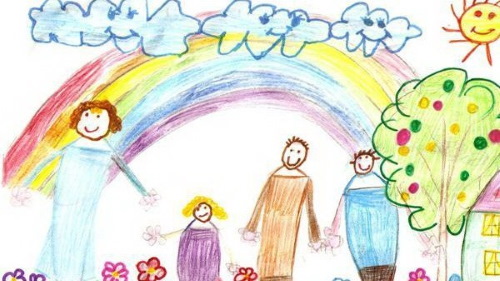 | A child who depicts himself surrounded by loved ones considers his life to be happy and harmonious. He receives enough attention from all family members and is happy when everyone gets together. A rainbow with remnants of clouds drawn on the background indicates that the child has had a negative experience in the recent past. This could be a quarrel with parents or getting a low grade at school. Despite the past, in the present the child is in a good mood, has an adequate outlook on life and has a stable psyche. |
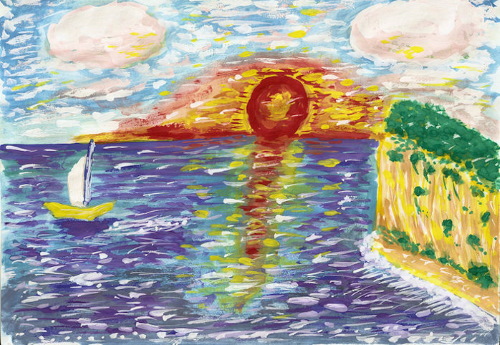 | A schoolchild who associates his inner state of mind with the sunset is most likely tired of the events happening around him.
He does not want communication and prefers to refuse close attention even from his parents. Despite the fact that this child would like to change the current arrangement of affairs, he does not consider himself unhappy in the present, understanding that the accumulated fatigue is a temporary phenomenon. |
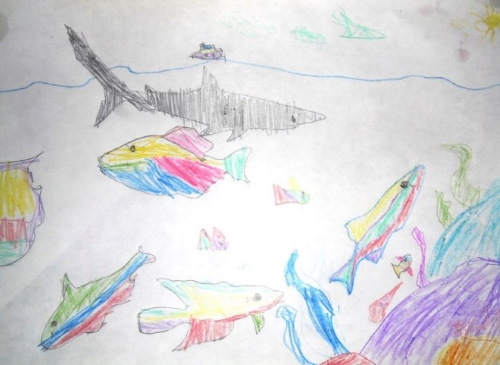 | A child who draws himself as a colorful fish among predatory sharks experiences fear of some person.
If a schoolchild has recently had a conflict with parents or a teacher, for the psychological comfort of the growing person, it is necessary to sort out this situation, allowing the child to speak out and explain his point of view. If there was no negative experience with adults, it is recommended to pay attention to the child's environment. Perhaps he is subjected to pressure or hidden bullying from older children. |
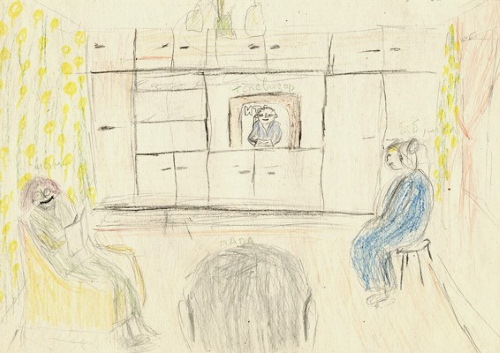 | A child who drew a picture in the first person, imagining himself sitting with his parents in front of the TV, values time spent with family, but feels an acute lack of attention from adults.
Mom and dad are always busy for him and are at a great distance. To calm a child's inner anxiety, parents need to adjust their daily routine so that they can spend quality time with their son or daughter. |
Phraseological units used appropriately in a person’s speech are not only considered a sign of his intelligence and education, but also help, if necessary, to more clearly express emotions during a conversation with an interlocutor.
Drawings created by junior and middle school students on the topic of the meaning of set expressions clearly illustrate the meaning of a specific speech turn, helping to remember its meaning. The child himself will be able to draw these pictures, thus splashing out his emotions on paper and relaxing mentally and emotionally.
Video about drawings based on phraseological units
Pictures on the topic of phraseological units:
